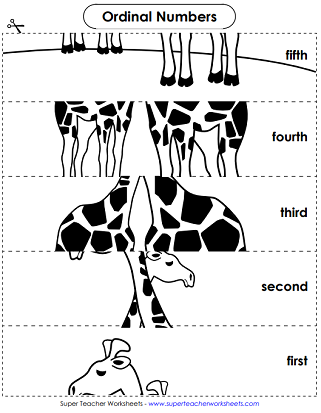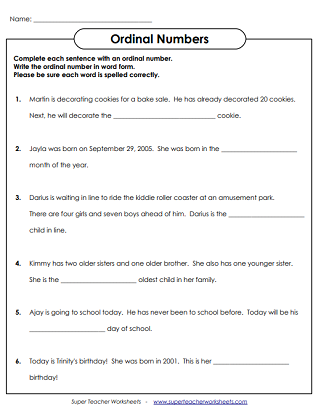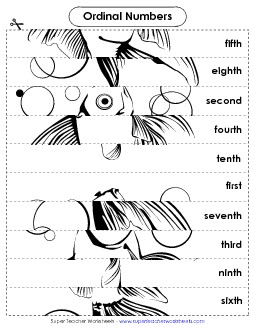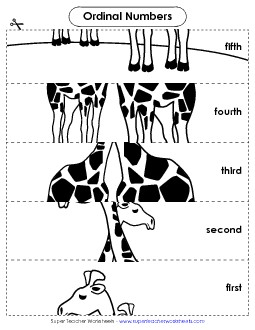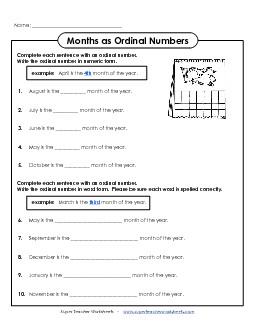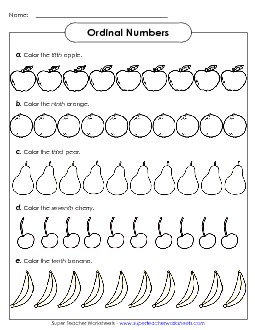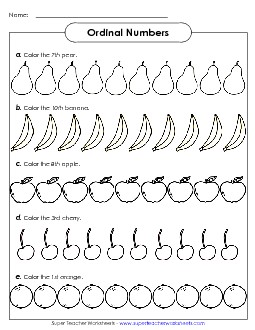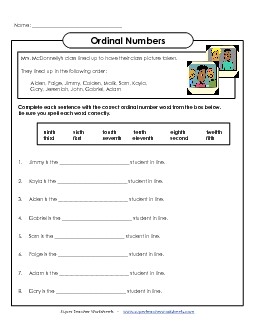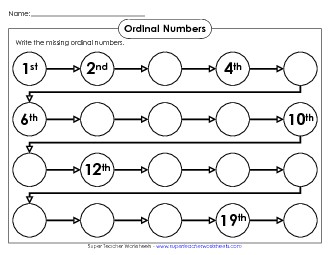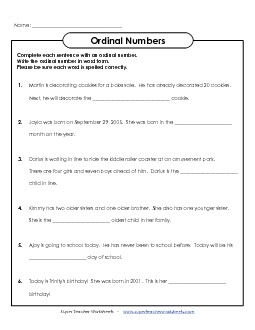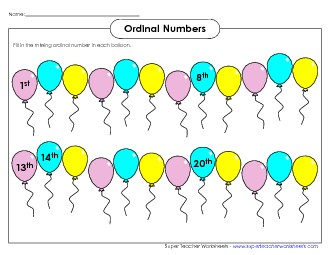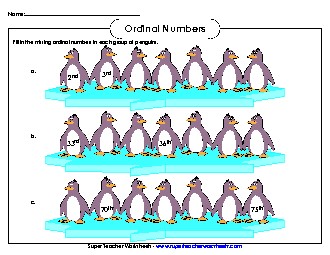Ordinal Numbers
Ordinal numbers are users to describe order, or position in a series. Examples of ordinal numbers include, 1st, 2nd, 3rd, 4th, and so on.
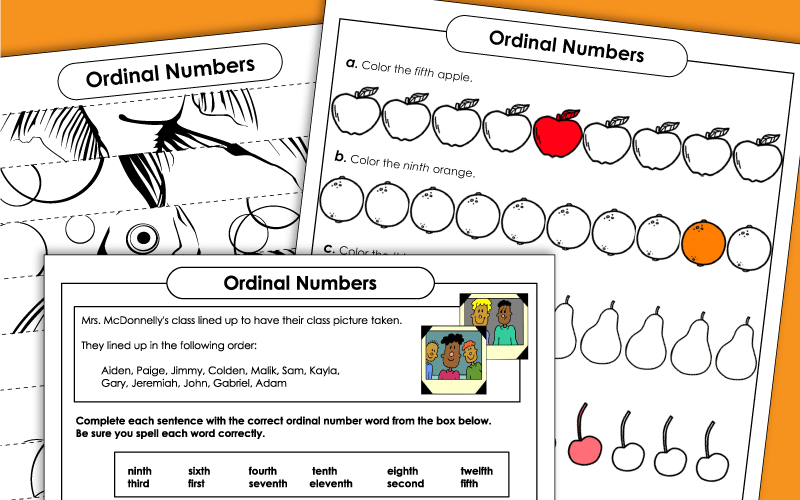
Students cut out the picture strips with ordinal numbers on them. Sort them from the smallest (1st) to the largest (10th) to assemble a picture of a goldfish.
Kindergarten and 1st Grade
Filing Cabinet
Logged in members can use the Super Teacher Worksheets filing cabinet to save their favorite worksheets.
Quickly access your most used files AND your custom generated worksheets!
Please login to your account or become a member and join our community today to utilize this helpful feature.
Cut out the ordinal number puzzle strips. Sort them from the smallest (1st) to the largest (5th) to assemble a picture of two giraffes.
Kindergarten and 1st Grade
Color each fruit according to the directions. Students must recognize ordinal numbers in word form. (example: Color the fifth apple.)
Kindergarten and 1st Grade
Color each fruit according to the directions. Students must recognize ordinal numbers in numeral form. (example: Color the 7th pear.)
Kindergarten and 1st Grade
Students are lining up to have their pictures taken. Write an ordinal number to correctly describe the order of the students.
Kindergarten and 1st Grade
Ordinal Number Line FREE
Write the missing ordinal numbers on the number line. Range from 1st through 20th.
Kindergarten and 1st Grade
Write the missing ordinal numbers on the balloons. Range from 1st through 24th.
Kindergarten and 1st Grade
Write the missing ordinal number on each penguin's belly. Range from 1st through 75th.
Kindergarten to 2nd Grade
Ordinal numbers are also used when reading calendars.

